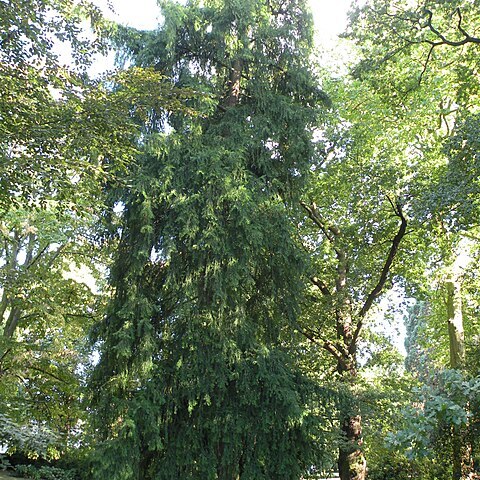Trees to 20(--25) m; trunk to 9(--12) dm diam.; crown conic or, in age, round-topped. Branches spreading to slightly drooping; 2-year-old branches reddish brown. Leaves 3--8 cm, abaxial side with 2 deeply impressed, glaucous bands of stomates, flattened on adaxial side, emitting pungent odor when crushed. Pollen cones whitish. Seed (including aril) 2.5--3.5 cm; aril light green streaked with purple. 2 n = 16.


